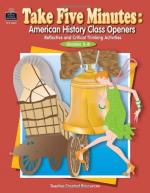|
This section contains 848 words (approx. 3 pages at 300 words per page) |

|
Scientific Capital.
The "scientific capital" of antebellum America was indisputably Philadelphia, at least until the Smithsonian Institution was established in Washington in 1846. Since the days of Benjamin Franklin and Benjamin Rush, young Americans had gone to Philadelphia to study science and medicine at the University of Pennsylvania. The University of Pennsylvania was, in fact, the only place an American could pursue a medical degree in the eighteenth century without crossing the Atlantic. The intellectual climate of Philadelphia helped sustain the American Philosophical Society and other scholarly organizations, which in turn promoted and patronized the study of the sciences.
Naturalists as Explorers.
In the early nineteenth century those institutions produced most of the naturalists and illustrators who accompanied the great exploring expeditions to the unknown reaches of the trans- Mississippi West. Meriwether Lewis, for example, studied briefly in Philadelphia to prepare for his western...
|
This section contains 848 words (approx. 3 pages at 300 words per page) |

|




